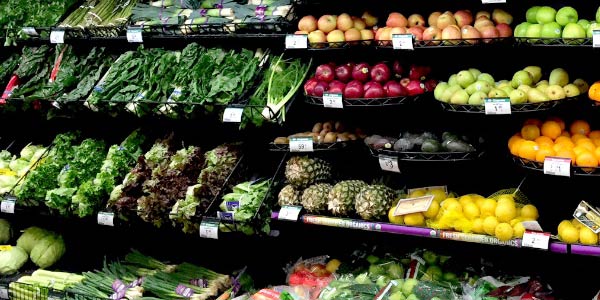Purchasing fruits and vegetables from local farmers removes a lot of the guesswork. In most cases, you’re face-to-face with the person who raised the produce. You can directly ask about how the items were grown, what pesticides and fertilizers were used, when they were picked and how each should be stored. Your options are determined by Mother Nature. What’s offered is what’s in season.
At the grocery store, however, it’s a bit trickier. Faced with a colorful oasis of choices, it’s tough to make decisions—especially if you are trying to eat seasonally. As you weave through bountiful displays, questions begin to surface. Were these tomatoes picked green and gassed red? Is organic really worth the extra money? (Who knows how and where this stuff was actually grown!) Will these strawberries mold in two days like the last quart?
Unless you want to do a lot of legwork—researching, emailing, flagging down store personnel and making calls—it’s tough to get answers. Like most other segments of the food industry, the produce segment lacks transparency. But clever minds are working to change that.
In a recent post entitled “Do you know what you’re eating? A “truth” detector has the answers,” CBS News profiled the work of Greg Shewmaker. Mr. Shewmaker is Target’s entrepreneur in residence. He developed a mass spectrometer that scans produce and identifies a sort of fingerprint for each item. Like a laser gun, the device shoots light into fruits and vegetables and takes multiple pictures of each item to create a profile for analyzing nutrient content and freshness.
Target is working with Shewmaker’s prototype in Florida and in Cambridge. Partnering with MIT and design firm IDEO, the retail chain aims to create greater transparency in the food system. The plan is for the technology to tell consumers everything they’d want to know about the food they are selecting (e.g., what they’re buying, where it’s from and how long it’s going to last).
As CBS’ post mentions, the grocery manufacturers association estimates that 10 percent of food purchases are adulterated or misidentified. Shewmaker’s team’s long-term goal is to be able to track and identify all foods around the globe.
What will that mean for consumers? Immediate answers. The vision is for shoppers to use a hand-held device or smartphone app to instantly access specifics. Scan an item. Push a button. Voila! All of the information a conscious eater would want to make a purchasing decision appears. Now that’s transparency.

